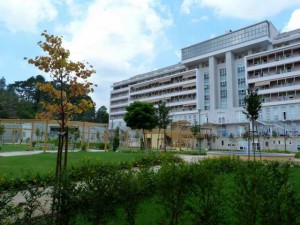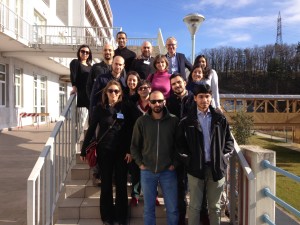Organized by the PICQUE Associated partner Sissa, International School for Advanced Studies, Trieste, Italy


The training school empowers early-career researchers to communicate effectively with the mass media, policy makers, and various lay publics, while at the same time encouraging researchers to reflexively analyze the place of science in society and adopt an open attitude to public engagement. The teaching forms consists in lectures combined with theoretical and practical exercises.
Wednesday 11 February
| Who are you communicating and why? | ||
| 09:30-10:30 | Course introduction and Identification of Trainee’s Profile | |
| 10:30-11:00 | Lecture: Audience Types | Nico Pitrelli |
| 11:00-11:30 | Activity: Audiences for Science Communication | Nico Pitrelli and Donato Ramani |
| 11:30-12:00 | Coffee break | |
| 12:00-12:20 | Activity: Trainee’s perception of science, society and communication | Nico Pitrelli |
| 12:20-12:40 | Lecture: Uses and Gratifications of Science Communication | Nico Pitrelli |
| 12:40-13:30 | Activity: Thinking about audiences | Nico Pitrelli and Donato Ramani |
| 13:30-14:30 | Lunch | |
| How to write papers that get cited and proposal that get funded | ||
| 14:30-15:00 | Lecture: Storytelling and paper structure | Chiara Saviane |
| 15:00-16:30 | Activity: Writing an abstract | Chiara Saviane and Donato Ramani |
| 16:30-16:45 | Coffee break | |
| 16:45-17:30 | Activity: Abstract evaluation and correction | Chiara Saviane |
| 17:30-18:30 | Activity: Discussion | Chiara Saviane and Donato Ramani |
Thursday 12 February
| Science writing for media | ||
| 09:30-9:50 | Lecture: When Does Science Become News? | Nico Pitrelli |
| 9:50-11:30 | Activity: Identifying the news value | Donato Ramani |
| 11:30-11.45 | Coffee break | |
| 11:45-13:00 | Lecture: Press release and press office | Donato Ramani |
| 13:00-14:00 | Lunch | |
| 14:00-16:30 | Activity: Writing a press release | Donato Ramani |
| 16:30-16:45 | Coffee break | |
| 16:45-18:00 | Activity: Writing a press release: discussion and correction | Donato Ramani and Nico Pitrelli |
Friday 13 February
| How the media cover science | ||
| 9:30-10:00 | Activity: Understanding media roles | Donato Ramani |
| 10:00-10:30 | Lecture: How the media cover science | Nico Pitrelli |
| 10:30-11:00 | Activity: Interview preparation | Nico Pitrelli and Donato Ramani |
| 11:00-11:15 | Coffee break | |
| 11:15-12:30 | Activity: Giving comments to journalists | Nico Pitrelli and Donato Ramani |
| 12:30-13:30 | Activity: Giving comments to journalists: correction | Nico Pitrelli and Donato Ramani |
| 13:30-14:30 | Lunch | |
| Communicationg to policy makers | ||
| 14:30-15:00 | Lecture: How to communicate with policy makers | Nico Pitrelli |
| 15:00-15:15 | Lecture: The elevator pitch | Chiara Saviane |
| 15:15-16:15 | Activity: Elevator pitch preparation | Chiara Saviane |
| 16:15-16:30 | Coffee break | |
| 16:30-18:00 | Activity: Elevator speech presentations | Chiara Saviane and Nico Pitrelli |
| 18:00-18:30 | Conclusions and course evaluation | |
Link to presentations (password-protected page)
Main Learning outcomes:
-to be able to identify potential non-expert audiences for techno-scientific information;
-to recognize the differences in science communication models adopted by various stakeholders;
-to acquire the general skills to present scientific information clearly to different audiences;
-to understand the process by which science is transformed from peer-reviewed paper to the news article;
-to improve oral and writing skills, as applied to scientific information, both for other scientists and for non-expert audiences;
Meeting Venue
Sissa, International School for Advanced Studiesvia Bonomea, 265 – 34136 Trieste ITALY